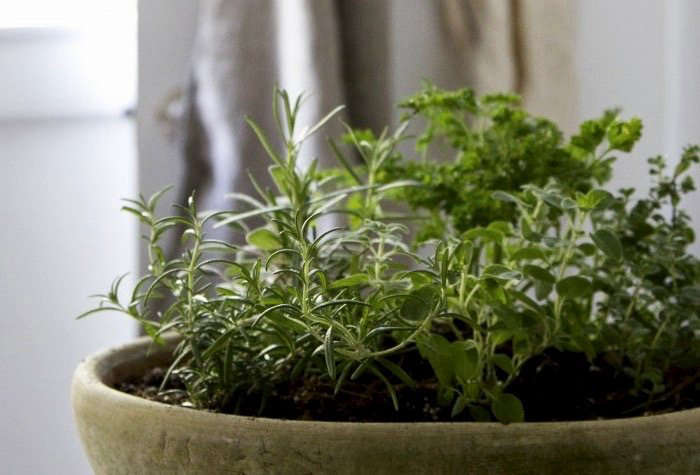Ever since a rat leapt from deep within the compost as my husband was pitchforking a layer of food waste into the grass clippings, we’ve become what you might describe as reluctant to add our dinner leftovers to the bin.
Instead, for months I’ve been saving random onion skins, carrot tops, celery roots, turnip nubs, garlic skins, tough ends of leeks, and parsley stems in a big bin in the freezer. The purpose of this exercise? To collect the ingredients for a batch of zero-waste vegetable broth, to moisten the Thanksgiving stuffing.
My zero waste vegetable broth recipe, inspired by Zero Waste Chef, is extremely easy to make and delicious (not to mention a satisfying alternative to feeding the neighborhood rats a sit-down meal). Here’s a recipe and a few tips on the best ingredients to put in the soup pot:
Onion Skins

Behold, the winter onion.
Onions are the backbone of nearly every broth or soup I make because they create a base of intense flavor. Onion skins have the added benefit of adding a rich, golden color to broth.
Celery Leaves

Look what you can find in the back of the refrigerator if you rummage long enough.
Along with onions, carrots, and garlic, celery belongs to that family of vegetables described in cooking as “aromatics.” Chopped finely and sautéed, aromatics are the basis of tomato sauces and many soups. If you add the flavorful leaves and celery heels to a pot of broth, you’ll increase the delicate complexity of the flavor.
Carrot Tops

Yes, there is a Carrot Museum and its website is a staunch defender of eating the leaves instead of throwing them away, because carrot tops are “highly nutritive, rich in protein, minerals and vitamins. They contain six times the vitamin C of the root and are a great source of potassium and calcium.”
Turnips

Raw turnips taste peppery, but when added to broth they impart a mellow, nutty flavor.
Herbs

I grow a lot of garden herbs—chives, parsley, thyme, and oregano are a few—and I save stalks to flavor stock. (One exception: I don’t add the woody stems of rosemary to broths or soups.) See more tips in Everything You Need to Know About Herb Gardens.
What will you need in addition to vegetable and herb scraps to make zero waste broth?
Stockpot

A nice, heavy stockpot that heats evenly is the most important kitchen tool you’ll need to make broth. That, plus a wooden spoon to stir and skim the broth, and you’re in business.
Recipe: Zero-Waste Vegetable Broth

Ingredients:
- 8 cups vegetable trimmings
- 1 cup herb trimmings
- Water
- Salt
- Pepper
Rinse vegetables and herbs thoroughly (dirt tends to get stuck in the heels of celery, and there’s almost always sand lurking in leeks). Put all the vegetables and herbs into a stockpot and add water to cover. Bring the mixture to a boil and then lower it to a simmer for an hour or so. Strain the broth through cheesecloth, add salt and pepper to taste, and allow it to cool before refrigerating or freezing.
And what to do with the odd bits left over after straining? At my house those end up on the city’s compost heap these days instead of in my bin (sorry, backyard rodents).
N.B.: Looking for more of our favorite Thanksgiving recipes? See:
- The Miracle of the Pumpkin Chiffon Cake
- Thanksgiving Recipes: 5 Salads to Serve on the Side
- Scarlet Jewels: Recipes for Thanksgiving Cranberries












Have a Question or Comment About This Post?
Join the conversation (1)